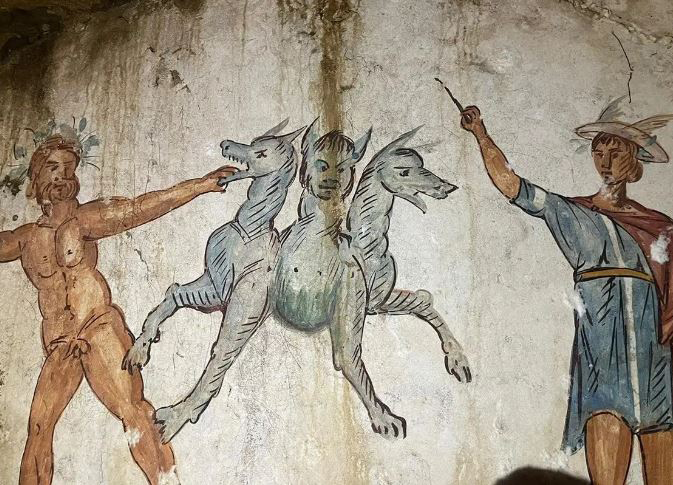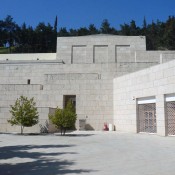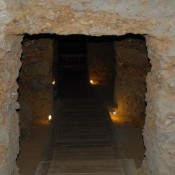An exceptional chamber tomb, unlooted and in perfect condition, was discovered within cultivated land in the municipality of Giugliano in Campania, as part of the work program conducted by Acqua Campania SpA for the “Completion and adaptation of the water supply system of the Flegreo Domitiana area”.
During preliminary archaeological investigations, archaeologists came across a dispersion of material from the historical era. Headed by Dr. Simona Formola, excavations began at the site where a high density of burials had been found. The necropolis showed different burial customs (both inhumation and cremation), which testify to the long use of the area for funerary purposes, spanning over a period of at least four centuries, from the Republican Age to the Roman Imperial Age.
What at first was identified as an opus incertum wall turned out to be the frontage of a monumental chamber tomb, with its entrance sealed by a slab made of tuff.
The Superintendent Mariano Nuzzo was the first to access the burial chamber, after removing the closing tiles.
The chamber showed frescoes across the ceilings and walls, in perfect condition, depicting mythological scenes, like two ichthyocentaurs holding a clypeus and being attended by two winged Erotes on the front wall. Among the various figurative representations a three-headed dog stands out, hence the name of the mausoleum as the Tomb of Cerberus. The scene shows the last of the twelve labors of Hercules, the one in which the hero captures Cerberus, the “brazen-voiced hound of Hades” (according to Hesiod).
“Three painted klìnai, an altar with vessels for libations, the deceased still placed on the funeral beds with rich objects – complete the picture of a discovery which, in this area, is unprecedented,” according to the press announcement of the Superintendent Of Archaeology, Fine Arts And Landscape For The Naples Metropolitan Area.



